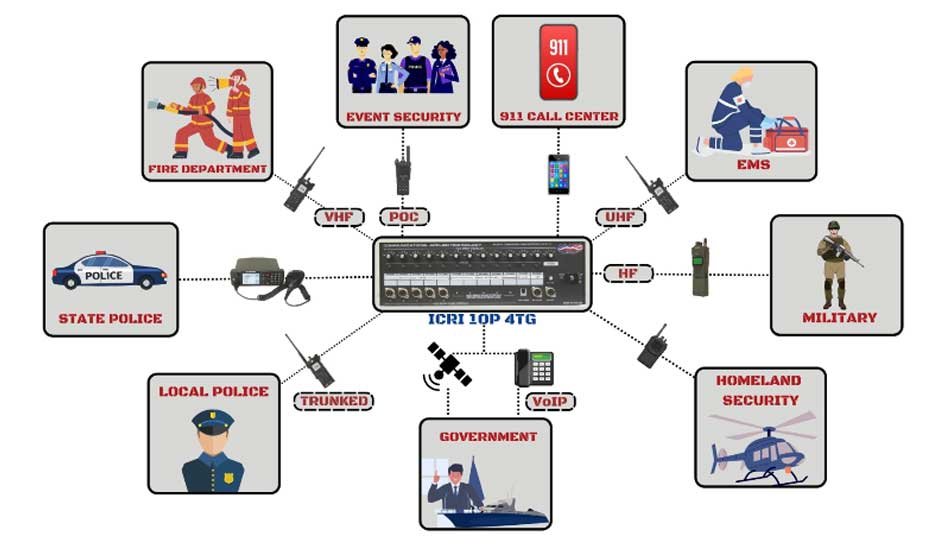Skip to the good bit
ToggleWhat is Radio Interoperability?
In the high-stakes realm of emergency management, the ability to communicate across various radio systems and technologies can be the difference between an effective response and a critical failure. Radio interoperability means agencies with different equipment or communication protocols can still reliably exchange information when it matters most. This is especially vital when multiple teams converge during natural disasters, large-scale accidents, or complex coordination efforts.
Recent innovations in radio over IP have revolutionized how emergency services handle communication challenges. By leveraging internet-based protocols, radio over IP bridges gaps between legacy and digital systems, ensuring that voice and data can flow freely regardless of geography or platform limitations. Agencies shifting towards these solutions often experience immediate clarity, reach, and reliability improvements.
Challenges in Emergency Communications
Despite the importance of clear communication, many agencies struggle with fragmented or outdated infrastructure. Traditional radio systems often operate on isolated frequencies, making collaboration cumbersome when disaster response requires multi-agency coordination. Disconnected systems were a major pitfall during the reaction to events like Hurricane Katrina, where the inability to share timely information slowed rescue efforts and resource deployment. This challenge is echoed globally—without true interoperability, first responders face unnecessary risks and delays.
Physical barriers, technical limitations, and insufficient planning compound these communication issues. Disasters can damage local infrastructure, while high call volumes may overwhelm available bandwidth. Pursuing solutions that account for these scenarios is essential for any agency prioritizing mission-critical connectivity.
Many organizations are embracing robust PACE planning strategies to enhance dependability during incidents further. PACE stands for Primary, Alternate, Contingency, and Emergency communications, ensuring structured fallbacks and redundancies so that teams stay connected even if one or more systems fail.
Technologies Bridging the Gap
The landscape of emergency communications is rapidly evolving due to the integration of digital technology and networking infrastructure. Modern gateways connect analog radios with digital and internet-based platforms, effectively dissolving previous barriers between disparate communication systems. Software-defined radio, mesh networking, and cloud-based dispatch tools allow agencies to communicate seamlessly across city, state, and national boundaries.
Adopting Internet Protocol-based systems, such as those supporting radio over IP, has opened new pathways for data interoperability and continues to be a key driver in bridging gaps between legacy frameworks. Cities investing in interconnectivity technology already see the impact in real-world emergencies, where information sharing can now be instant and reliable.
Benefits for First Responders
Interoperability in emergency response has improved response times, reduced misunderstandings, and reduced risk for emergency crews and communities. It also enhances situational awareness, enables better coordination, and allows for smart allocation of resources. This unified network supports coordinated action, situational updates, and direct tactical communication, regardless of individual agency equipment or procedures.
Implementing Interoperable Systems
Transitioning to interoperable radio solutions requires thoroughly evaluating existing communication assets, identifying compatibility gaps, and determining mission requirements. Collaboration with IT professionals and communications experts is crucial for selecting the right technology and support. Stakeholder teams must map needs and identify mission-critical requirements. A flexible, scalable solution should integrate easily with existing hardware. Digital tools and gateways should allow compatibility with older radio models while embracing new technologies. Agency-wide training, including scenario-based simulations, is essential for user confidence. Phased rollouts help address technical and cultural challenges gradually.
Future Trends in Radio Communications
Emerging technologies like AI and machine learning are being integrated into emergency dispatch systems to automate alerts, optimize resources, and predict threats. Predictive analytics could revolutionize dispatch centers by prioritizing incidents for effective responses. Handheld radios are merging with smartphones, providing responders with instant access to maps, databases, and live video feeds.
Standards development is ongoing, with organizations working toward safer, more interoperable communication channels.
Staying Informed
Remaining at the forefront of communication technology requires active professional development, including reviewing industry updates, engaging in interoperability exercises, and consulting research. Monitoring publications and participating in drills ensure teams are prepared for evolving challenges. As radio interoperability advances, agencies investing in training, collaboration, and adaptable tech are best positioned to protect lives and property when every second counts.
Conclusion
Radio interoperability is no longer a luxury but necessary for effective emergency management. As disasters grow more complex and unpredictable, seamlessly sharing information across agencies ensures faster response times, greater situational awareness, and safer operations for responders and the public. Advances such as radio over IP, mesh networking, and AI-driven tools transform communication from fragmented systems into unified lifelines. By prioritizing training, scalable technology, and collaborative planning, agencies can overcome barriers and build resilient networks that stand ready when lives depend on it.







